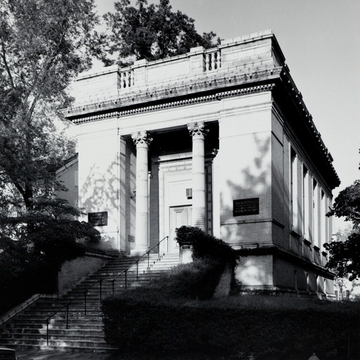Alexander Graham Bell's achievements in science and his interest in advancing the education of deaf children are both evoked by the Volta Bureau. With the $10,000 Volta Prize he won in 1880, Bell established a laboratory at the rear of his parents' house at 35th and Volta Place. His patents for a telephone and a phonograph record yielded additional funds that helped to endow the Volta Bureau for the Increase and Diffusion of Knowledge Relating to the Deaf.
Bell commissioned the prestigious Boston firm of Peabody and Stearns to design the building, which incorporated his laboratory, on a lot just north of his parents' house. Its design probably was derived from the Volta Temple at Lake Como, Italy, named in honor of physicist Alessandro Volta. The long,

